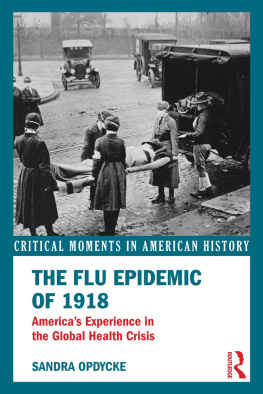PRELUDE: JUNE 16, 1903
Dark water slapped against the rowboat as it drifted on Cayuga Lake, a mile out from Ithaca. It was early in the afternoon, and the sky over upstate New York was clear. Far in the distance, on top of East Hill, a soaring clock tower that today is called McGraw Tower marked the location of Cornell University for anyone on the lake. From the observation deck near the top of the 173-foot spire could be seen Stimson Hall, the new medical school building and, of late, a makeshift hospital that was the scene of student suffering and death just a few weeks before. A little closer was Sage Chapel, where angry young men and women betrayed by their elders had met to demand action against the typhoid epidemic. Finally could be seen the home of embattled Ithaca Daily News publisher and Cornell oratory professor Duncan Campbell Lee, who had done his best to save the school and the town, and that of Andrew Dickson White, the elderly and distinguished cofounder and first president of the university. It is doubtful anyone, even in the tower, saw the flyspeck that was the empty rowboat in the middle of the magnificent lake, unless they had binoculars or extremely keen vision. Yet the boat and the university were inextricably linked that day by events born out of reckless ambition and criminal stupidity, a combination that has brought so much sorrow to the world.
At Cornell it was Class Day of graduation week, but the students who gathered outside of former President Whites home had more than diplomas on their minds. All were survivors of the typhoid epidemic that had ravaged Ithaca during the first four months of 1903. The grave diggers had been busy. At least eighty-two people died, including twenty-nine Cornell students. Another 1,350 or so Ithaca residents, including more than 381 Cornell students, contracted typhoid but survived. The exact total will likely never be known thanks to poor record-keeping. Many young people in Ithaca suffered horribly, left exhausted and awash in medical bills that could be as much as $500, nearly a years wages for a workingman in 1903, a stiff price even for the middle class.
White had been the U.S. ambassador to Germany until late in November 1902, when he tendered his resignation to President Theodore Roosevelt. The last eighteen months of his tenure were full of sorrow. His only son, Frederick, after a lifetime of medical problems growing out of his own bout with typhoid as a Columbia University student years earlier, committed suicide in July 1901. The same month, his only daughter, Clara Newberry, split from her philandering husband in an ugly, very public divorce. After leaving Berlin, White traveled to his villa in Alassio on the Italian Riviera between Nice and Genoa and was there during the Ithaca epidemic. As a result, he probably saw little of the extensive local and national press coverage. The current Cornell president, Jacob Gould Schurman, and the chairman of the universitys Board of Trustees, Samuel D. Halliday, had written to him with some of the details of the epidemic, as had his daughter and grandson. It was the press coverage, and the public anger it reflected, that had nearly killed Cornell. With only a touch of hyperbole, journalists had portrayed Ithaca as a charnel house. They raised pointed questions about the links between Cornell University and William T. Morris, who had purchased Ithaca Water Works in 1901. Water provided by the company had become contaminated with typhoid germs that past January. But White had been in Italy and so did not fully comprehend the shock in America that such a terrible epidemic could happen in a place like Ithaca, which had one of the countrys leading universities and more physicians per capita than any other municipality in New York.
White stepped outside and assured the group of students that all was well, that Cornell would be stronger for having endured this catastrophe. It was the sort of thing old people always told young people at times like this, but he was wrong. The wounds had not healed, as the disturbing and concurrent events on Cayuga Lake and the Cornell campus that day made clear. Perhaps White was thinking hopefully of his own family troubles when he spoke.
Statistically, the typhoid epidemic in Ithaca was one of the worst in American history and one of the last of note, arriving even as better sanitation was beginning to reduce typhoids awful toll. At least that was true in Europe. But not here. Not yet. It was still a time in America when a businessman like William T. Morris could decide, for financial reasons, against building a water filtration plant for Ithaca and there was no arm of government to force his hand, no one to make him do things right. America in 1903 was on the cusp of the modern age. The Wright Brothers flew their airplane at Kitty Hawk, the very first feature film, The Great Train Robbery , astounded audiences, and Ithaca began to seriously use long-distance telephone service, all in 1903. But corporations still had the upper hand, and American public health lagged far behind that in Britain, France, and Germany. Citizens could do little about either.
Back on the lake, one oar of the drifting rowboat dangled in the water, moving the lock and making it creak. A breeze coming from the north gentled the boat toward a cluster of other small craft anchored over the Hog Hole, a popular place to fish in the lakes southwest corner. As the boat drifted closer, a gentlemans derby hat could be seen on the rear seat. That spooked the fishermen, who chattered nervously across the water.
One of them, Walter L. Head, who taught blacksmithing at Cornell, rowed over and set the trailing oar back inside. His wife looked into the boat and gasped. Next to the hat lay a fancy metal matchbox and a folded pocketknife, the accoutrement of a middle-class businessman. It was as if the owner had laid them neatly on his dresser and lain down to take a nap. But where was he? Who was he? There was water in the bottom of the boat, as if it had somehow tilted to let in the lake. But there had been no storm or heavy waves today. The name Van Order was stenciled on the boat. Head knew Sylvester Van Order rented boats from a livery on Cascadilla Creek, off the Cayuga Lake inlet that served as Ithacas harbor. Assuming that one of the boatmans customers had fallen into the lake and drowned, Head tied the empty craft to his own and began the long row back to town.












